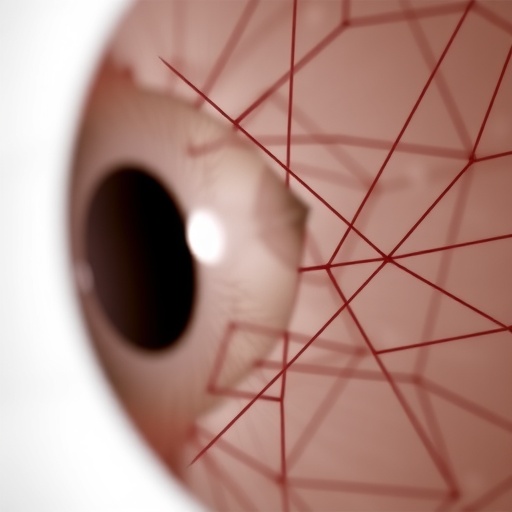Bottom Line: Administration of the EGLN inhibitor FG-4592 prior to ablative radiotherapy provided protection against fatal gastrointestinal bleeding and improved survival in a mouse model of unresectable pancreatic cancer.
Journal in Which the Study was Published: Cancer Research, a journal of the American Association for Cancer Research
Author: Cullen Taniguchi, MD, PhD, assistant professor of radiation oncology at The University of Texas MD Anderson Cancer Center
Background: Surgery is required for the curative treatment of pancreatic cancer, yet the majority of patients with this disease have unresectable tumors, said Taniguchi. While radiation therapy may be a future alternative to surgery in this patient population, the required dose of radiation to effectively treat the disease can damage the neighboring organs, which can lead to gastrointestinal bleeding and even death, he explained. “This study was conducted to understand if it was possible to protect the bowels from radiation damage in order to give enough radiation to effectively treat unresectable pancreatic cancer,” he said.
Hypoxic cells induce a powerful regenerative response, resulting in the protection of tissue, Taniguchi said. “Inhibition of EGLN mimics hypoxia, allowing us to take advantage of the healing response of this phenomenon without actually depriving the cell of oxygen,” he explained.
How the Study Was Conducted and Results: Tumor hypoxia is a feature of many cancerous cells that can lead to disease progression and metastasis and is especially prevalent in pancreatic cancer, Taniguchi noted. The researchers found that murine pancreatic tumors were already highly hypoxic and adding FG-4592 did not induce further hypoxia; however, in normal murine tissues, which are not hypoxic, adding the EGLN inhibitor effectively mimicked hypoxia and protected the tissue.
To determine if administration of FG-4592 could improve survival following ablative radiation therapy, the researchers assigned 70 mice bearing spontaneous, palpable pancreatic tumors one of four treatments: vehicle only, FG-4592 only, vehicle plus radiotherapy, and FG-4592 plus radiotherapy. FG-4592 and vehicle were administered orally, and radiotherapy treatments consisted of 15 fractions to a limited tumor field totaling 75 Gray.
Overall, mice treated with radiotherapy with prior radioprotection via FG-4592 had the highest median overall survival (43 days); no gastrointestinal bleeding was observed. Mice treated with radiotherapy without radioprotection had decreased median overall survival (36 days), and fatal gastrointestinal bleeding was observed in 56 percent of mice in this cohort. The difference in overall survival between these two groups was statistically significant.
Among mice that did not receive radiotherapy, treatment with FG-4592 increased the median overall survival compared to vehicle alone (29 days versus nine days, respectively).
Author’s Comments: “The fact that treatment with FG-4592 alone increased survival in mice harboring pancreatic cancer was a surprising finding,” said Taniguchi. “We are actively investigating this result, and one preliminary hypothesis is that EGLN inhibition may modulate the immune system and contribute to this therapeutic effect,” he added.
“Our proof-of-concept study illustrates that higher doses of radiation therapy can improve outcomes in unresectable pancreatic cancer as long as treatment toxicity is reduced with a radiation protector,” said Taniguchi. “As toxicity is a major limiting factor of cancer treatment, protecting normal tissues from radiation damage is an important concept in the field of oncology that warrants additional attention,” he noted.
“While we utilized EGLN inhibitors in our study, we want to emphasize that radioprotection is not limited to this class of drugs,” noted Taniguchi. “We hope that our results stimulate more research in this area.”
Study Limitations: Taniguchi noted that a major limitation in this preclinical mouse study was that no chemotherapy was administered, which would be considered standard of care in humans before the initiation of radiotherapy. “In this preliminary study, we felt that the addition of chemotherapy might complicate the key question of whether we could give an ablative dose of radiation to pancreatic tumors without lethally damaging the small bowel,” Taniguchi explained. “As such, future experiments with clinically relevant chemotherapy, such as FOLFIRINOX or gemcitabine, will need to be conducted in mice before initiating a clinical trial,” he added.
Funding & Disclosures: This study was supported by funding from the Cancer Prevention & Research Institute of Texas, the V Foundation, the Sidney Kimmel Foundation, the Sabin Family Foundation Fellowship, the McNair Foundation, and the National Cancer Institute.
Taniguchi declares no conflict of interest.
###
Media Contact
Julia Gunther
[email protected]
http://dx.




